Esther Mahlangu and The Global Revolution of Ndebele Art
Exploring the Artistry of South African Ndebele Artist Esther Mahlangu
The journey into the art world of South African Ndebele artist, Esther Mahlangu, is one filled with colors, culture, and creativity. This article seeks to explore various aspects of Mahlangu’s art and life, answering common questions posed by art enthusiasts.
Who is Esther Mahlangu and what is she known for?
Esther Mahlangu is a world-renowned South African artist born in 1935. Hailing from the Ndebele nation, she has become an ambassador of her people’s art, showcasing the Ndebele’s vibrant and geometric patterns to an international audience.
Mahlangu’s artistry doesn’t end at traditional canvas paintings. She has transformed various objects into pieces of art, ranging from murals, household objects, and even luxury cars. This adaptability has led to collaborations with high-profile corporations, the most notable being her BMW Art Car project.
Although Mahlangu started painting at the tender age of 10, her big break came in 1986 when she was invited to the Magiciens de la Terre exhibition in France. From there, her unique Ndebele art style captured the hearts of many, and her work has been exhibited in various museums and galleries worldwide.
Esther Mahlangu has dedicated her life to keeping the Ndebele painting tradition alive. Through teaching and mentorship programs, she passes on her skills to the younger generation, ensuring the Ndebele art form’s continuity.
Her commitment to preserving her cultural heritage has been recognized globally. She has received honorary doctorates from the University of Johannesburg and the University of Pretoria for her significant contributions to the arts.
In addition to her impressive achievements, Mahlangu’s influence transcends her artistry. Her life and work inspire discussions on the importance of maintaining and celebrating cultural identities in a rapidly globalizing world.
Mahlangu’s art serves as a beacon, shining light on the richness of African cultures. Through her, the world learns more about the Ndebele people’s traditions and values. This legacy has not only cemented her status as an icon in the art world but also as a figure of cultural importance in South Africa and beyond.
Mahlangu’s influence in the art world is undeniable. Her work and the passion she has for her culture have brought the Ndebele’s vibrant art to an international stage. She has become a symbol of the power of art in bridging cultural gaps and promoting understanding among different people.

How does Esther Mahlangu contribute to social justice through her art?
Art is a powerful medium for conveying messages, and Esther Mahlangu has expertly used it to advocate for social justice. In a world where the voices of indigenous peoples are often marginalized, Mahlangu’s art loudly proclaims the existence and value of the Ndebele culture.
As an African artist, she has had to navigate the often challenging terrains of the global art scene. But rather than assimilating to Western art norms, Mahlangu has remained true to her roots, consistently presenting her Ndebele heritage in her works. This decision is a strong statement against the erasure of indigenous cultures and an affirmation of their worth.
Mahlangu’s art serves as a tool for education, shedding light on the rich cultural history of the Ndebele people. Her vibrant murals and paintings do not just tell her personal story, but they narrate the collective experiences of her people. Through her art, she contributes to the conversation on cultural diversity and respect for indigenous cultures.
Moreover, Mahlangu’s success in the international art scene demonstrates the possibilities for African artists. In a space where African artists have been underrepresented, her achievements challenge the status quo and provide inspiration for emerging artists in the continent.
Another significant aspect of her contribution to social justice is through the economic empowerment of her community. The recognition she has brought to the Ndebele art form has increased its market value, providing a viable source of income for many in her community.
Indeed, Mahlangu’s influence in the social justice space can be seen not only in her captivating artworks but also in her tireless advocacy for the appreciation and respect of African cultures. For more insights into how African artists utilize their talents for social justice, check out this article.

Esther Mahlangu’s Influence on Street Art
Esther Mahlangu’s artistry isn’t limited to traditional galleries or exhibitions – it permeates public spaces, breathing life and color into urban landscapes. Her influence on street art, particularly within South Africa and globally, is profound.
Mahlangu’s approach to public art marries Ndebele traditional painting techniques with the ethos of street art. Her vibrant murals echo the essence of graffiti – public, accessible, and deeply tied to identity. Mahlangu’s street art not only brings Ndebele culture into the public eye, but it also infuses everyday life with the vitality of African aesthetics.
One of her significant contributions to street art is in demonstrating the genre’s capacity to narrate cultural stories. Through her public murals, Mahlangu validates street art as a medium for cultural expression and preservation, similar to her contemporary, Banksy, who uses his work to comment on societal issues.
Mahlangu’s approach has inspired a new generation of street artists in Africa and beyond. These artists, following in her footsteps, are leveraging the public canvas to showcase their cultural heritage, creating a vibrant and culturally diverse urban landscape.
Importantly, Mahlangu’s murals also bring attention to the potential of art in revitalizing communities. Her murals have become landmarks, attracting tourists and encouraging investment in the areas where they exist, thereby empowering local communities. For more on how African street art is transforming urban landscapes, visit this article.
In summary, Esther Mahlangu’s influence on street art is substantial. She has expanded the genre’s scope, empowered communities, and cemented her place as a pioneering figure in the world of public art.
How Mahlangu’s Art Transforms Spaces
Mahlangu’s work is characterized by its bold patterns and vibrant colors that inject life and energy into any space they occupy. Whether on a traditional canvas, a massive mural, or even the side of a BMW, Mahlangu’s art instantly draws attention and transforms spaces.
One key aspect of Mahlangu’s work is its powerful visual impact. The bold, geometric patterns inspired by the Ndebele tradition are a celebration of African aesthetics. Her art pieces become focal points in a room, drawing in the viewer’s attention and inviting them to engage with the work.
Moreover, the cultural narrative imbued in Mahlangu’s artwork adds depth and meaning to the spaces they inhabit. Her paintings are not merely decorative but are a testament to the Ndebele culture, conveying a story of resilience, identity, and cultural pride. This narrative aspect makes her work an interesting and meaningful addition to both public and private spaces.
Perhaps the most impressive example of how Mahlangu’s art transforms spaces is her collaboration with BMW. In 1991, she was invited to create art for a BMW 525i, making her the first woman and the first African artist to participate in the BMW Art Car Project. Mahlangu’s design transformed the car into a moving canvas that showcased her culture and artistic prowess to a global audience.
Mahlangu’s ability to adapt her traditional painting technique to various surfaces is another testament to her art’s transformative power. From household items to architectural structures, she transforms everyday objects and spaces into extraordinary pieces of art.
The transformative effect of Mahlangu’s art extends beyond the visual aspect. By bringing the Ndebele aesthetics to various spaces, she stimulates conversations about African art and culture, challenging the dominance of Western aesthetics and contributing to the diversity of artistic expressions.
In essence, Esther Mahlangu’s art transforms spaces by adding color, energy, cultural narratives, and conversations about diversity. It is more than just an aesthetic enhancement—it is a celebration of African art and a catalyst for cultural dialogue.
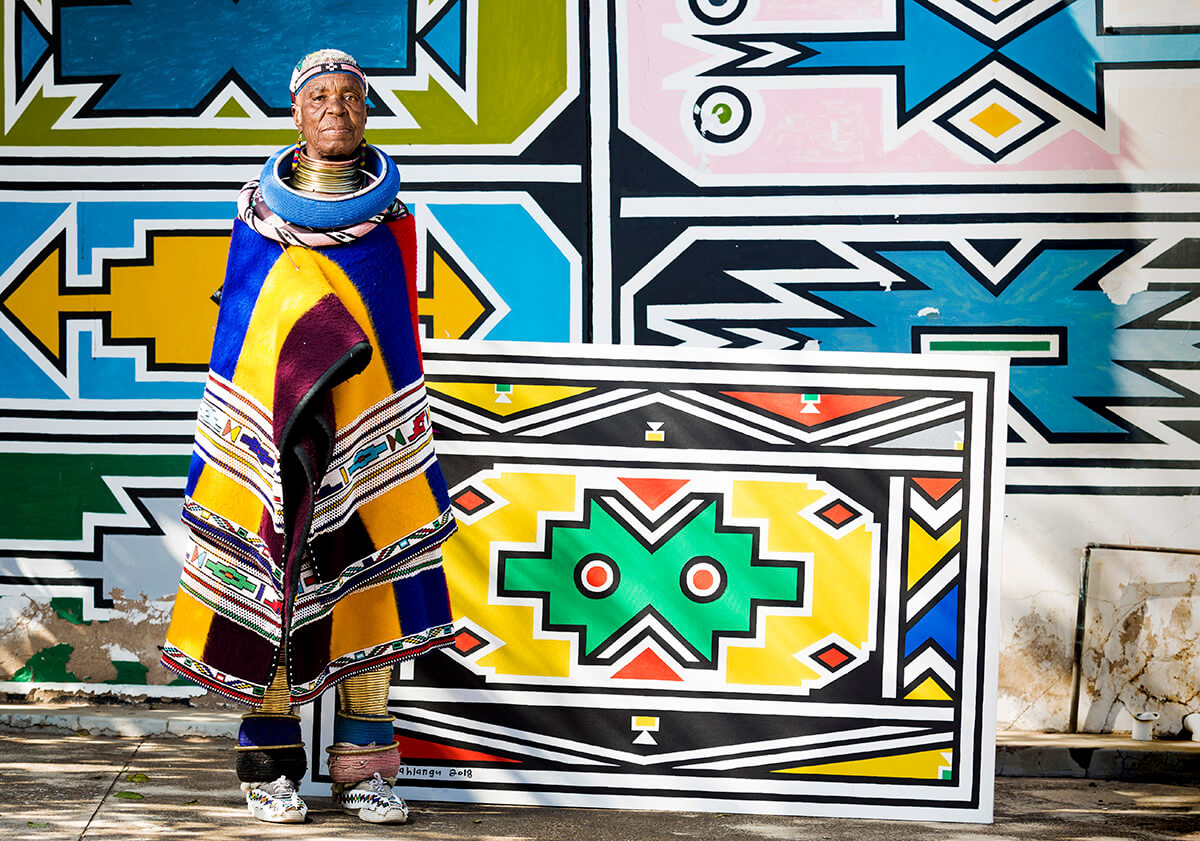
Mahlangu’s Creative Process
The creation process of Esther Mahlangu’s art is a meticulous and thoughtful process, deeply rooted in Ndebele tradition. While her art has evolved and adapted to different mediums over the years, the core essence of the Ndebele painting technique remains the same.
Mahlangu’s creative process begins with the selection of a theme. This theme is often a reflection of the Ndebele culture and values, inspired by the traditions and personal experiences of the artist. Next, she considers the palette – the vibrant color selection that has become synonymous with Ndebele art.
The actual painting process is labor-intensive, requiring a keen eye for detail. Mahlangu doesn’t use rulers or measurement tools – each line and shape is drawn from memory and experience. This approach requires concentration and precision, which is evident in the symmetry and regularity of her patterns.
Unlike many modern artists, Mahlangu still uses chicken feathers as brushes, dipping them into pots of acrylic paint. This traditional method gives her artwork a distinctive texture and charm, contributing to its unique appeal.
Mahlangu also ensures the preservation of the Ndebele art form by teaching young women in her community. She shares her artistic techniques, cultural narratives, and personal experiences, nurturing a new generation of Ndebele artists. By doing this, she preserves the artistic heritage of her people, allowing it to evolve while maintaining its traditional core.
Throughout her creative process, Mahlangu manages to create a perfect balance between tradition and innovation. Her art continues to inspire and capture the attention of audiences around the world due to her mastery of Ndebele techniques and her unique artistic vision.
The Business Side of Mahlangu’s Art
As an artist, Esther Mahlangu has not only made a significant cultural impact but also carved out a successful business. Her art has high commercial value, and her collaborations with international brands have further amplified this.
Mahlangu’s work is collected and exhibited around the world. Her paintings are not just valuable for their aesthetic and cultural significance, but they are also considered a good investment. The market for African art has been growing, and Mahlangu, as a prominent African artist, plays a significant role in this development.
Mahlangu’s brand collaborations add another dimension to her business model. She has worked with numerous global brands, such as BMW, British Airways, and Belvedere Vodka, among others. These partnerships have brought her work to a wider audience, enhancing her commercial success.
Furthermore, Mahlangu’s art school, where she teaches the Ndebele painting techniques to young women, contributes to her business model. By fostering a new generation of Ndebele artists, she not only ensures the continuity of the art form but also creates a pool of talent that can further expand the market for Ndebele art.
An integral part of Mahlangu’s business success is her unwavering commitment to her cultural roots. Even as she navigates the global art market, she retains the authenticity of her art. This commitment has earned her respect and credibility in the art world, contributing to her commercial success.
It’s important to note that Mahlangu’s art business isn’t solely for personal gain. A significant portion of her earnings is invested back into her community, contributing to its development and empowerment.
In conclusion, Esther Mahlangu has created a successful business from her art. Her business model incorporates cultural preservation, global brand collaborations, and community investment. As a result, she has established a sustainable system that ensures the continuity and growth of Ndebele art while contributing to her community’s socioeconomic development.
Mahlangu’s Role in Empowering the Ndebele Women
Esther Mahlangu’s impact is not only evident in the art world, but also in her tangible contributions towards empowering the women in the Ndebele community. Her life and work serve as a beacon of inspiration for many women, particularly those in her community.
Traditionally, Ndebele painting was a skill passed down from mother to daughter, and Mahlangu has carried on this tradition. Through her art school, she has taught countless young Ndebele women the traditional painting techniques, helping them to keep their cultural heritage alive. In this way, Mahlangu has empowered these women by giving them a medium to express their cultural identity.
Additionally, by teaching them a commercially viable skill, she has provided them with a means to be economically independent. Many of the women trained by Mahlangu have been able to sell their artwork, enabling them to support themselves and their families.
Mahlangu’s success on the global stage has also had a significant impact on the perception of women artists, not only in the Ndebele community but across Africa. She has challenged gender stereotypes and paved the way for other women artists to be recognized and valued in the global art scene.
Her commitment to preserving her culture and promoting her art form has made her a role model for many women in her community and beyond. Through her actions, Mahlangu has shown that it is possible to honor one’s cultural heritage while also making a significant impact in the contemporary world.
In conclusion, Esther Mahlangu’s role in empowering Ndebele women is multi-faceted. She empowers them through education, economic opportunities, challenging gender stereotypes, and serving as a role model. Her life and work continue to inspire many women to realize their potential and contribute to their communities.
Mahlangu’s Global Collaborations and Exhibitions
Esther Mahlangu’s art has been recognized and celebrated globally. She has participated in numerous exhibitions and collaborations that have taken her work beyond South Africa, securing her place on the international art stage.
One of her most notable global collaborations is with the BMW Art Car project in 1991, where she was the first non-Western artist and the first woman to be commissioned. Mahlangu transformed the BMW 525i model into a vibrant display of Ndebele patterns, fusing traditional art with modern technology. This project significantly increased her international visibility and led to more collaborations with other global brands, including British Airways, Fiat, and Belvedere Vodka.
Mahlangu’s art has also been exhibited in some of the world’s most prestigious galleries and museums. She has displayed her work at the Centre Georges Pompidou in France, the National Museum of Women in the Arts in Washington D.C., and the Virginia Museum of Fine Arts, among others.
Furthermore, Mahlangu was the first person to create a piece of artwork for the Museum of Modern Art in New York’s advertising campaign in 1997. This was a significant achievement, highlighting her international recognition and the global appeal of her work.
These exhibitions and collaborations have not only enhanced Mahlangu’s profile but also brought the Ndebele art form to a global audience. They have sparked interest in African art and culture, contributing to its appreciation and understanding in the global sphere.
In conclusion, Esther Mahlangu’s global collaborations and exhibitions have been instrumental in cementing her position in the global art scene. Through these platforms, she continues to showcase her cultural heritage, challenge western art norms, and inspire a global audience with her vibrant and meaningful art.
| Year | Exhibition | Location |
|---|---|---|
| 1989 | Magiciens de la Terre | Centre Georges Pompidou, Paris, France |
| 1991 | BMW Art Car Project | Global |
| 1994 | Johannesburg Biennale | Johannesburg, South Africa |
| 1997 | Art in the Anchorage | Creative Time, Brooklyn, NY, USA |
| 1999 | Liberated Voices: Contemporary Art from South Africa | Museum for African Art, New York, NY, USA |
| 2010 | Johannesburg Art Fair | Johannesburg, South Africa |
| 2014 | Women’s Work | Iziko South African National Gallery, Cape Town, South Africa |
| 2015 | The Art of Ndebele Painting | Virginia Museum of Fine Arts, Richmond, VA, USA |
| 2016 | A Tribute to Nelson Mandela | Uppsala Art Museum, Uppsala, Sweden |
| 2017 | Art/Afrique, Le nouvel atelier | Foundation Louis Vuitton, Paris, France |
| 2018 | Ex Africa | Centro Cultural Banco do Brasil, Belo Horizonte, Brazil |
| 2019 | African Twilight: Vanishing Rituals & Ceremonies | Bowers Museum, Santa Ana, CA, USA |
| 2020 | Esther Mahlangu 85 | Melrose Gallery, Johannesburg, South Africa |
| 2021 | "Another Energy: Power to Continue Challenging" | Mori Art Museum, Tokyo, Japan |
| 2023 | The Ultimate AI Masterpiece | Art Basel, Switzerland |
The Future of Ndebele Art in the Post-Mahlangu Era
Esther Mahlangu has undoubtedly been a critical figure in the preservation and global promotion of Ndebele art. But with her advancing age, one might wonder: what is the future of Ndebele art in the post-Mahlangu era?
The future looks promising. Mahlangu has been proactive in ensuring the continuity of the Ndebele art form. She established an art school at her home in South Africa, where she imparts her knowledge to the younger generation. Many of these students have already begun producing their works, promising a future for Ndebele art that remains vibrant and authentic.
There’s also a growing interest in African art on a global scale. African artists are gaining more representation in international exhibitions and art markets, and there’s an increasing recognition of the cultural and aesthetic value of African art. These trends suggest a conducive environment for the future growth of Ndebele art.
Furthermore, the rise of digital technology offers new opportunities for Ndebele art. Artists can use social media platforms to reach a global audience, making Ndebele art more accessible than ever. There’s also the possibility of integrating Ndebele art with digital mediums, opening up exciting new avenues for artistic expression.
In conclusion, while Mahlangu’s contributions to Ndebele art are unparalleled, the art form is bigger than one person. The combination of a robust succession plan, a favorable global art climate, and the opportunities offered by digital technology suggests a bright future for Ndebele art in the post-Mahlangu era.
Summary: Esther Mahlangu and the Power of Ndebele Art
In wrapping up this exploration of Esther Mahlangu’s life and work, it’s evident that her influence extends far beyond the confines of her art. She’s not just an artist; she’s a cultural ambassador, a teacher, a community leader, and a symbol of empowerment.
Through her vibrant Ndebele art, Mahlangu has brought the world’s attention to her community. Her global collaborations and exhibitions have not only raised her profile but also positioned Ndebele art in a global context.
In her community, Mahlangu has played a critical role in preserving the Ndebele painting tradition. By teaching younger generations, she has ensured that the art form continues to thrive. Beyond preservation, Mahlangu has empowered many women in her community by providing them with a skill that can yield economic benefits.
Looking at Mahlangu’s impact on the broader social sphere, it’s clear that her work intersects with larger themes of cultural preservation, social justice, and women’s empowerment. Whether it’s through the messages embedded in her paintings, her commitment to cultural preservation, or her efforts to empower women in her community, Mahlangu uses her platform to advocate for change.
The story of Esther Mahlangu is a testament to the power of art – to express, to communicate, to preserve, and to empower. It’s a reminder of the value of maintaining cultural identities and the role of artists in shaping our understanding of the world. To delve deeper into expressions of African art, visit this article.
| Topic | Summary |
|---|---|
| Biography | Esther Mahlangu is a South African artist from the Ndebele nation known for her vibrant geometric artwork. |
| Social Justice | Mahlangu uses her art to advocate for cultural preservation and diversity, contributing to social justice. |
| Street Art | Mahlangu's work in public art has influenced the street art scene, infusing it with cultural narratives. |
| Transformative Art | Her art transforms spaces by adding color, energy, cultural narratives, and conversations about diversity. |
| Creative Process | Mahlangu's art creation process is rooted in Ndebele tradition and involves meticulous detail and craftsmanship. |
| Business | Her business model incorporates cultural preservation, global brand collaborations, and community investment. |
| Women Empowerment | Mahlangu has played a significant role in empowering the Ndebele women through art education and economic opportunities. |
| Global Collaborations and Exhibitions | Mahlangu's work has been exhibited worldwide, and she has collaborated with several international brands. |
| Future of Ndebele Art | The future of Ndebele art looks promising with Mahlangu's students carrying forward the tradition and a growing interest in African art globally. |
| Overall Impact | Mahlangu's work has a broad impact, touching on cultural preservation, social justice, women empowerment, and global art appreciation. |


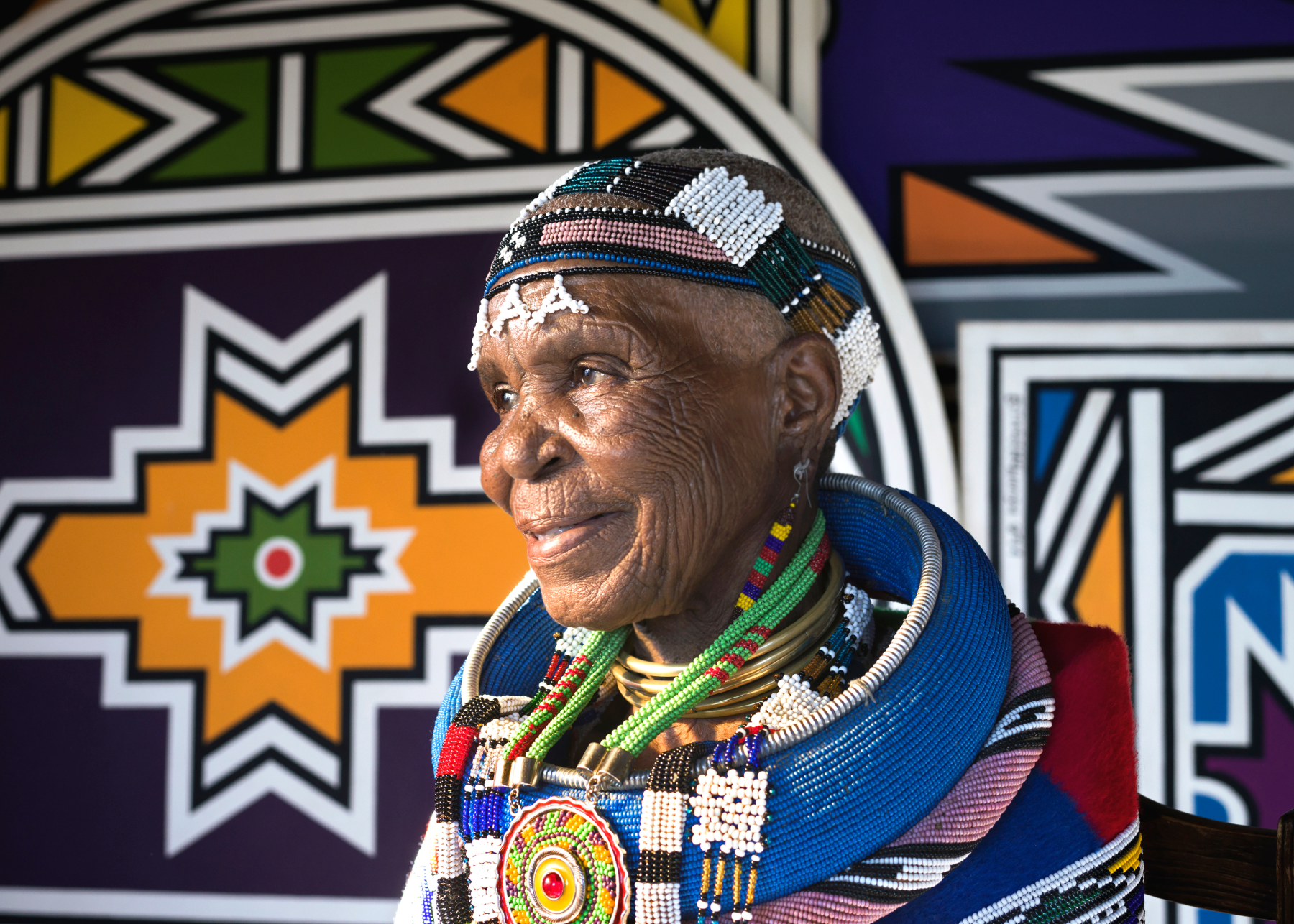
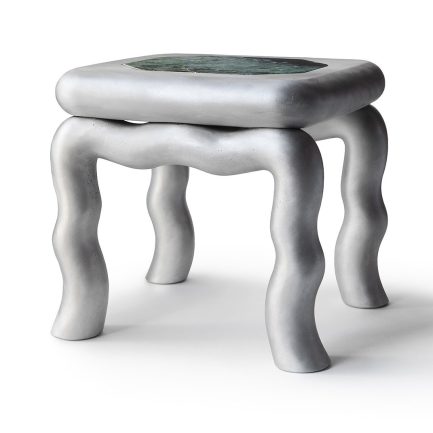




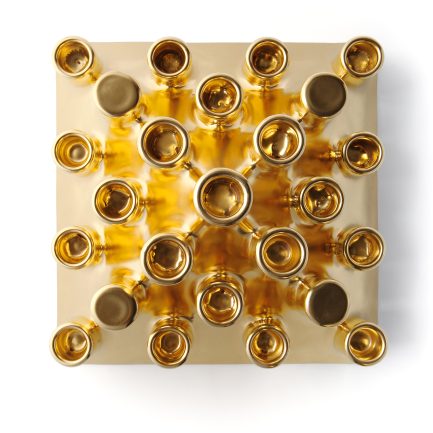





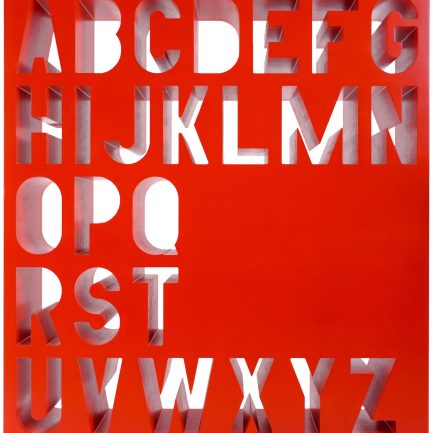




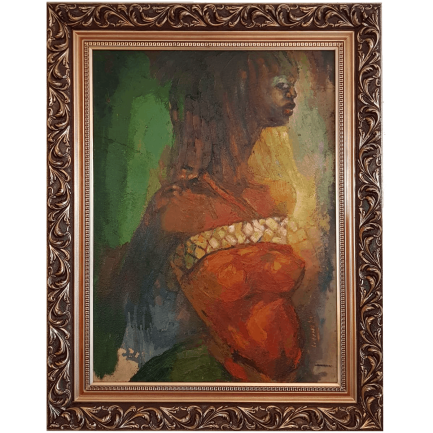




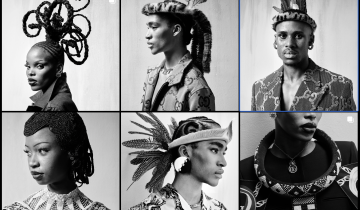
 No products in the basket.
No products in the basket.